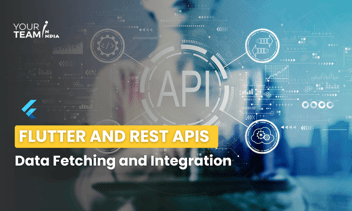Quick Summary: In the ever-evolving world of mobile app development, efficient data storage is a paramount concern. This article explores the integration of Flutter, a popular cross-platform framework, with Hive, a lightweight and high-performance NoSQL database. Discover how this powerful combination enables developers to build sleek and efficient data storage solutions for their mobile applications.
Introduction
Flutter, Google's open-source UI development framework, has taken the mobile app development world by storm. It allows developers to create beautiful, natively compiled applications for mobile, web, and desktop from a single codebase.
When building Flutter apps, one critical aspect to consider is data storage. Hive, a lightweight and fast NoSQL database for Flutter and Dart, is an excellent choice for local data storage. In this article, we'll explore how to integrate Hive into your Flutter app and provide you with code snippets to get started.
What is Hive?
Hive is a local, lightweight, and efficient database for Flutter and Dart. It is designed to be fast, making it an excellent choice for storing and retrieving data in mobile applications. Some key features of Hive include:
- Speed: Hive is incredibly fast due to its design, making it suitable for storing and retrieving data quickly in Flutter apps.
- Type Safety: Hive is type-safe, meaning it uses code generation to ensure that data is stored and retrieved in the correct format.
- Minimal Setup: Hive requires minimal setup and has a small footprint, making it easy to integrate into Flutter projects.
- Supports Various Data Types: Hive supports various data types, including primitive types, lists, maps, and custom objects.
Setting up Hive in Flutter
To integrate Hive into your Flutter project, follow these steps:
1. Add Dependencies
In your pubspec.yaml file, add the following dependencies:
2. Initialize Hive
In your Flutter app's main file (usually main.dart), initialize Hive inside the main function:
3. Create a Hive Box
A Hive Box is similar to a table in traditional databases. You can create a Hive Box to store a specific type of data. Here's an example of creating a Hive Box for storing tasks:
4. Storing and Retrieving Data
Now that you have set up Hive, you can store and retrieve data easily. Here's an example of adding a task to the "tasks" Hive Box:
To retrieve tasks from the "tasks" Hive Box:
Conclusion
Flutter, combined with Hive, offers a powerful and efficient solution for local data storage in your mobile applications. With its speed, type safety, and minimal setup requirements, Hive is an excellent choice for managing data within your Flutter projects.
In this article, we've explored the basics of integrating Hive into a Flutter app, including setting up dependencies, initializing Hive, creating a Hive Box, and storing/retrieving data. With these code snippets and guidelines, you can start using Hive to handle local data storage in your Flutter applications effectively.
So, go ahead and leverage the speed and simplicity of Hive to build feature-rich Flutter apps that handle data efficiently and provide a seamless user experience. Happy coding!








